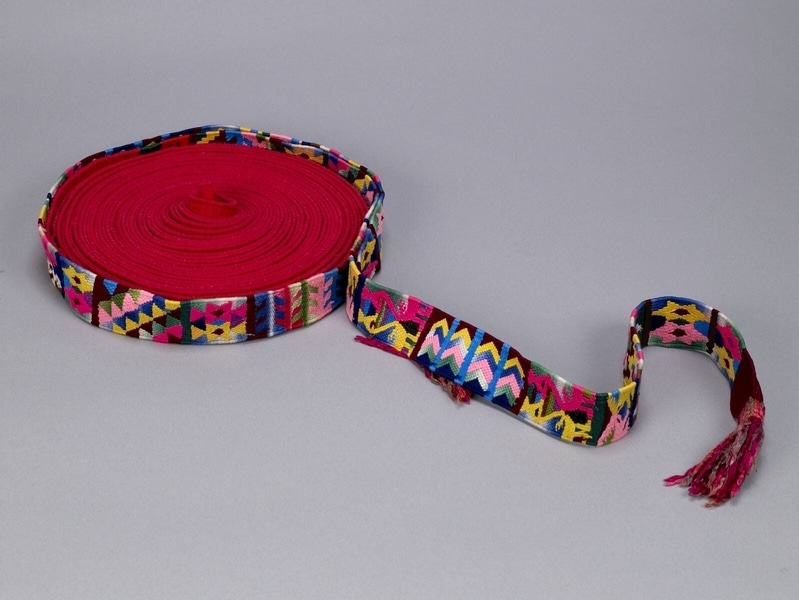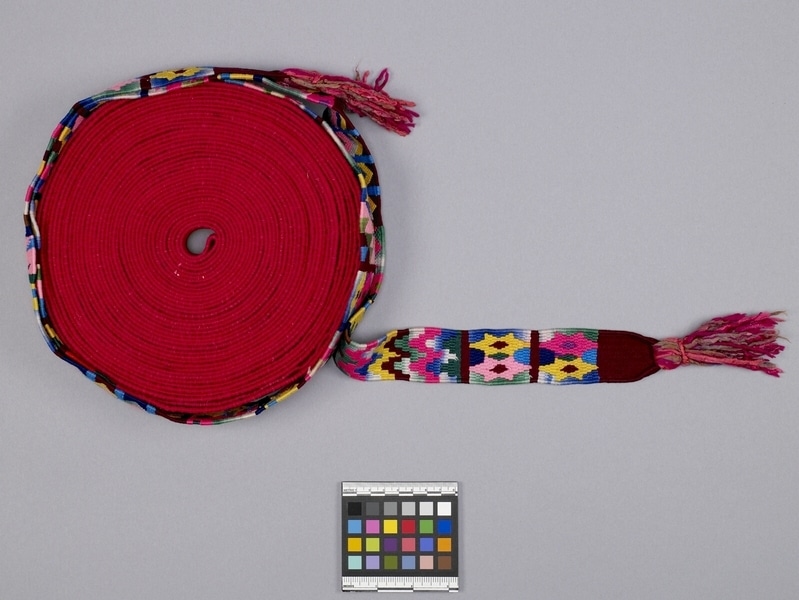Headdress Item Number: Sa231 from the MOA: University of British Columbia


Description
Headdress composed of a woven band, solid red at the centre with white warps visible at very few places along its length. On either end are matching bands of multicoloured design. The multicoloured designs consist of: six-pointed stars, a nine-stepped design, stylized animals and birds, chevrons, frontal figures, triangles, and arrows separated by solid, narrow bands of dark purple, green, dark blue or blue. Finished with bunched pink, magenta and mottled grey tassels of numerous ply (spin relaxed), knotted with one band of yarn.
History Of Use
Women's headdresses vary according to the village, marital status, age, and occasion at which they are worn. Headdresses worn by the women of Santiago Atitlan are first wrapped spirally through the hair and then evenly wound into one halo-like band with the decorated end to the outside. The long, red central section was introduced about 1910. Circa 1900, headdresses were shorter and predominately brown and blue (Rowe).
Cultural Context
clothing
Specific Techniques
Yarns examined appear to be s-plied. Ends and central portion are weft faced plain weave. The multicoloured sections between are split tapestry weave. Selvedges contain multiple warps. Single loom width. Fringe of roving (that has not been spun).
Item History
- Made in Santiago Atitlan, Solola, Guatemala before 1976
- Owned by Inge Ruus before July 1976
- Received from Inge Ruus (Seller) and Museum of Anthropology Donations Fund (Funding source) during July 1976
What
- Name
- Headdress
- Identification Number
- Sa231
- Type of Item
- headdress
- Material
- cotton fibre, cellulose ?, synthetic fibre and dye
- Manufacturing Technique
- machine spun, machine plied, dyed, woven and tied
- Overall
- height 4.4 cm, width 1639.0 cm
Who
- Culture
- Tzutuhil
- Previous Owner
- Inge Ruus
- Received from
- Inge Ruus (Seller) and Museum of Anthropology Donations Fund (Funding source)
Where
- Holding Institution
- MOA: University of British Columbia
- Made in
- Santiago Atitlan, Solola, Guatemala
When
- Creation Date
- before 1976
- Ownership Date
- before July 1976
- Acquisition Date
- during July 1976
Other
- Item Classes
- textiles
- Condition
- good
- Accession Number
- 0318/0009 a